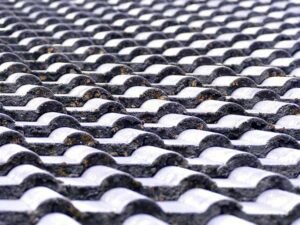A nonstop heat pump can be a sign that something isn’t working quite right. While it’s normal for a heat pump to operate frequently during extreme temperatures, constant operation under mild weather conditions may point to an underlying issue. It could be a mechanical problem, a maintenance issue, or even something related to how the system was installed. We will explore the common reasons a heat pump may be working overtime, what you can do to fix it, and how to make sure it continues to run efficiently in the future.
Common reasons a heat pump may be working overtime
-
Understanding How Heat Pumps Work and When Constant Running is Normal
Before assuming your heat pump has a problem, it’s essential to understand how it functions and what’s considered normal behavior. Unlike traditional heating systems that cycle on and off frequently, heat pumps are designed to run for more extended periods, especially during cold or hot weather when maintaining a consistent indoor temperature requires continuous effort. In winter, for example, a heat pump extracts warmth from the outside air—even when cold—and transfers it indoors. Because the process becomes less efficient as the temperature drops, the unit may need to run more often to keep your home comfortable.
The same goes for summer when the system works hard to remove heat from the air inside. During these peak seasons, it’s not unusual for a heat pump to run for extended periods. However, if your heat pump seems to be running constantly regardless of the weather or it’s not reaching the set temperature, that could indicate a deeper issue. The key is to monitor both the runtime and the system’s ability to maintain a steady indoor climate. If the system is always on, but your home still feels too warm or cold, it’s time to investigate further. The cause might be simple, such as a dirty filter or an incorrectly set thermostat, or it could involve a mechanical component that needs attention. By understanding what’s normal and what is not, you can better recognize when your system needs a closer look for heating repair in Tempe.
-
Thermostat Settings and Controls Can Influence Heat Pump Behavior
One of the first places to check when your heat pump is running more than it should is the thermostat. It may seem minor, but the thermostat plays a key role in your system’s operation. If it’s set too high or too low for the season, or if it’s been programmed incorrectly, the unit may run constantly as it tries to reach a temperature that isn’t realistic. Sometimes, the issue is as simple as a misunderstanding of how the system is set up—many homeowners accidentally use the “emergency heat” mode, which can keep the unit running without pause. In other cases, the thermostat may malfunction or not correctly communicate with the heat pump. This can result in poor temperature control and unnecessary energy use.
Calibrating or replacing the thermostat is often a simple solution that dramatically improves system performance. Another thing to consider is the placement of the thermostat in the home. If it’s located in a drafty hallway or near a window, it might be registering a temperature that doesn’t reflect the rest of the house. This causes the heat pump to work harder than necessary. To address these issues, it’s a good idea to review your thermostat settings, consult your system’s manual if needed, and ensure that the thermostat’s location isn’t contributing to inaccurate readings. A smart thermostat can be helpful in some cases, as it allows for more precise programming and real-time adjustments based on usage patterns.
-
Maintenance Issues That Lead to Constant Operation
Routine maintenance is essential to keeping a heat pump running efficiently. When maintenance is overlooked, minor problems can develop into more significant issues that affect the entire system’s performance. A dirty or clogged air filter is one of the most common culprits. Filters trap dust, dirt, and other particles that can block airflow. When airflow is restricted, the heat pump has to work harder to move air through the system, which can lead to longer cycles and reduced efficiency. Replacing or cleaning the filter regularly can prevent this from happening. Another common maintenance-related issue is dirty coils. The evaporator and condenser coils play a vital role in heat transfer.
If they’re coated with dirt or grime, they can’t absorb or release heat effectively, so the system has to run longer to achieve the desired temperature. Similarly, low refrigerant levels can reduce the system’s ability to heat or cool, causing it to stay on continuously. A technician must inspect and recharge the system if you suspect a refrigerant issue. Blocked or leaky ducts can also contribute to continuous running. If warm or cool air leaks before it reaches your living space, the thermostat won’t register that the target temperature has been reached, so the heat pump keeps running. Duct inspection and sealing can make a significant difference in these cases. Regular maintenance visits allow you to catch and fix these minor problems early, keeping your system efficient and helping prevent the constant operation from becoming the norm.
-
Sizing and Installation Problems Can Result in Inefficient Performance
Sometimes, the issue with a heat pump running constantly stems from how the system was installed. A unit that is either too small or too large for the home’s size and insulation level will struggle to operate efficiently. An undersized system simply can’t keep up with the heating or cooling demands, so it runs all the time trying to catch up. On the other hand, an oversized unit may heat or cool too quickly and then cycle off and on repeatedly, which leads to wear and tear and inconsistent comfort. Proper sizing involves more than square footage, including factors like ceiling height, insulation quality, number of windows, and local climate. If your system has been running excessively since it was first installed, it might be worth having a load calculation to verify whether it’s appropriately sized for your space.
Installation errors can also affect performance. Poor duct design, incorrect refrigerant charge, or improper placement of components can all lead to inefficiencies. For instance, its performance may suffer if the outdoor unit is located in a spot with poor airflow or too much exposure to the elements. These installation problems often go unnoticed until symptoms like constant running or uneven heating appear. If your heat pump’s behavior seems off despite regular maintenance and proper thermostat settings, revisiting the installation details may uncover the root cause. It’s a more significant issue to fix, but doing so can significantly improve comfort and energy use going forward.
A constant heat pump may seem a significant concern, but it can often be resolved properly. Whether the problem lies in thermostat settings, maintenance needs, or installation issues, addressing the root cause helps restore balance and improve system performance. By staying proactive, scheduling routine care, and monitoring unusual patterns, you can ensure your heat pump continues to operate efficiently throughout the year. Understanding how your system works and responding early to warning signs can save time, energy, and money in the long run.










